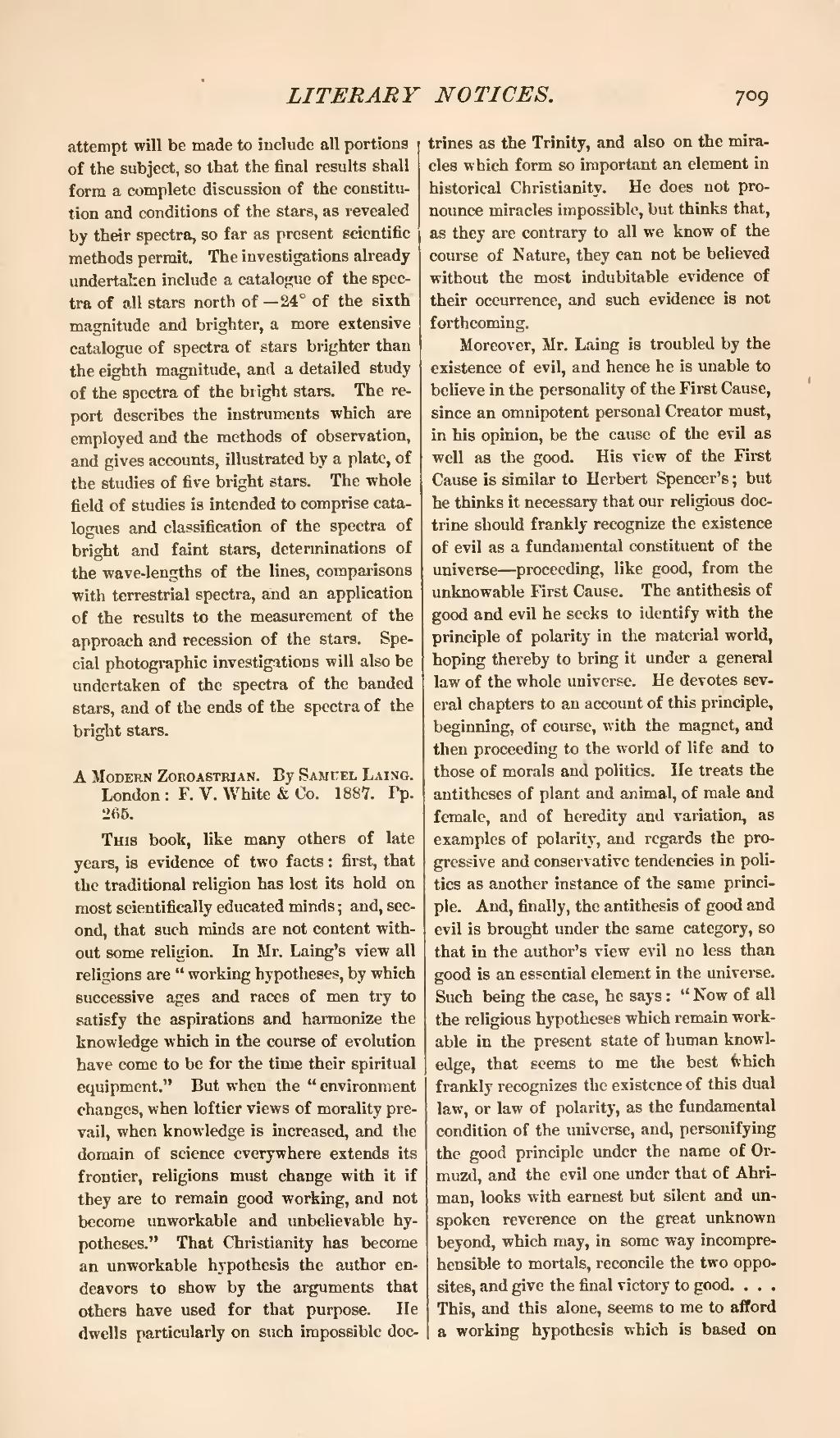attempt will be made to include all portions of the subject, so that the final results shall form a complete discussion of the constitution and conditions of the stars, as revealed by their spectra, so far as present scientific methods permit. The investigations already undertaken include a catalogue of the spectra of all stars north of-24° of the sixth magnitude and brighter, a more extensive catalogue of spectra of stars brighter than the eighth magnitude, and a detailed study of the spectra of the bright stars. The report describes the instruments which are employed and the methods of observation, and gives accounts, illustrated by a plate, of the studies of five bright stars. The whole field of studies is intended to comprise catalogues and classification of the spectra of bright and faint stars, determinations of the wave-lengths of the lines, comparisons with terrestrial spectra, and an application of the results to the measurement of the approach and recession of the stars. Special photographic investigations will also be undertaken of the spectra of the banded stars, and of the ends of the spectra of the bright stars.
A Modern Zoroastrian. By Samuel Laing. London: F. V. White & Co. 1887. Pp. 265.
This book, like many others of late years, is evidence of two facts: first, that the traditional religion has lost its hold on most scientifically educated minds; and, second, that such minds are not content without some religion. In Mr. Laing's view all religions are "working hypotheses, by which successive ages and races of men try to satisfy the aspirations and harmonize the knowledge which in the course of evolution have come to be for the time their spiritual equipment." But when the "environment changes, when loftier views of morality prevail, when knowledge is increased, and the domain of science everywhere extends its frontier, religions must change with it if they are to remain good working, and not become unworkable and unbelievable hypotheses." That Christianity has become an unworkable hypothesis the author endeavors to show by the arguments that others have used for that purpose. He dwells particularly on such impossible doctrines as the Trinity, and also on the miracles which form so important an element in historical Christianity. He does not pronounce miracles impossible, but thinks that, as they are contrary to all we know of the course of Nature, they can not be believed without the most indubitable evidence of their occurrence, and such evidence is not forthcoming.
Moreover, Mr. Laing is troubled by the existence of evil, and hence he is unable to believe in the personality of the First Cause, since an omnipotent personal Creator must, in his opinion, be the cause of the evil as well as the good. His view of the First Cause is similar to Herbert Spencer's; but he thinks it necessary that our religious doctrine should frankly recognize the existence of evil as a fundamental constituent of the universe—proceeding, like good, from the unknowable First Cause. The antithesis of good and evil he seeks to identify with the principle of polarity in the material world, hoping thereby to bring it under a general law of the whole universe. He devotes several chapters to an account of this principle, beginning, of course, with the magnet, and then proceeding to the world of life and to those of morals and politics. He treats the antitheses of plant and animal, of male and female, and of heredity and variation, as examples of polarity, and regards the progressive and conservative tendencies in politics as another instance of the same principle. And, finally, the antithesis of good and evil is brought under the same category, so that in the author's view evil no less than good is an essential element in the universe. Such being the case, he says: "Now of all the religious hypotheses which remain workable in the present state of human knowledge, that seems to me the best which frankly recognizes the existence of this dual law, or law of polarity, as the fundamental condition of the universe, and, personifying the good principle under the name of Ormuzd, and the evil one under that of Ahriman, looks with earnest but silent and unspoken reverence on the great unknown beyond, which may, in some way incomprehensible to mortals, reconcile the two opposites, and give the final victory to good. . . . This, and this alone, seems to me to afford a working hypothesis which is based on
